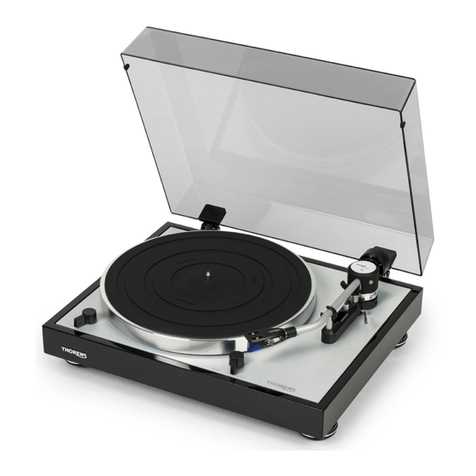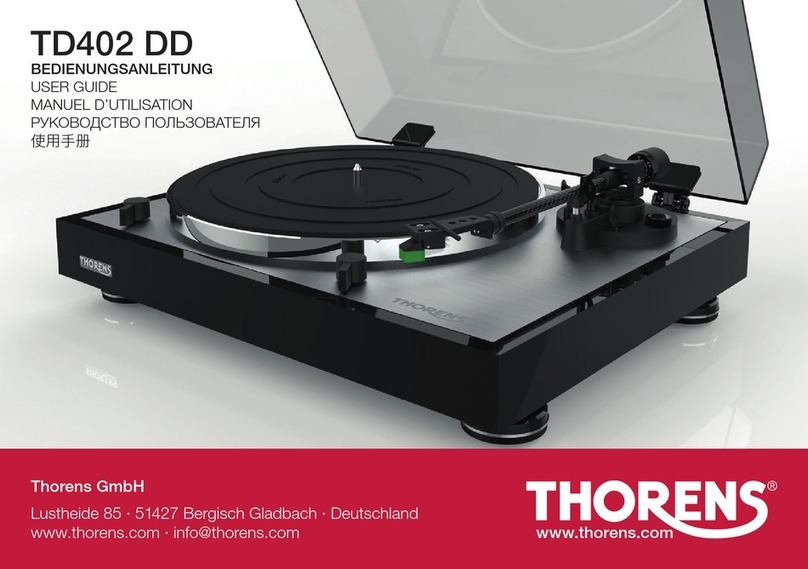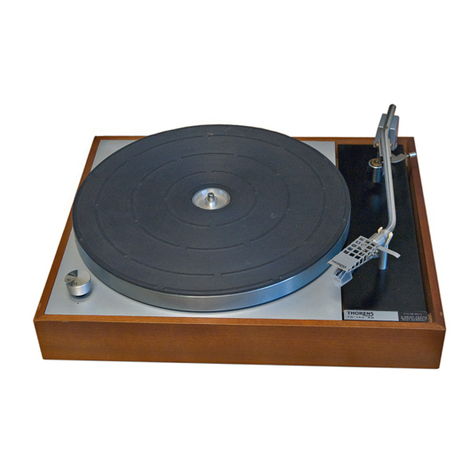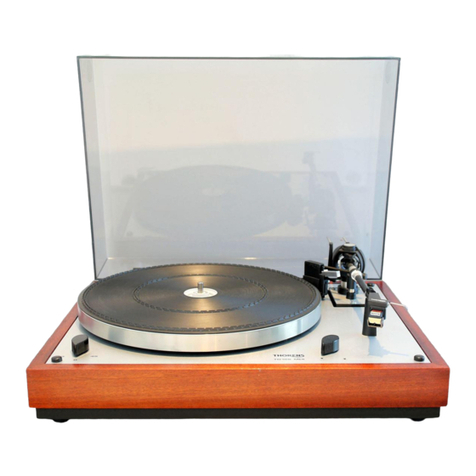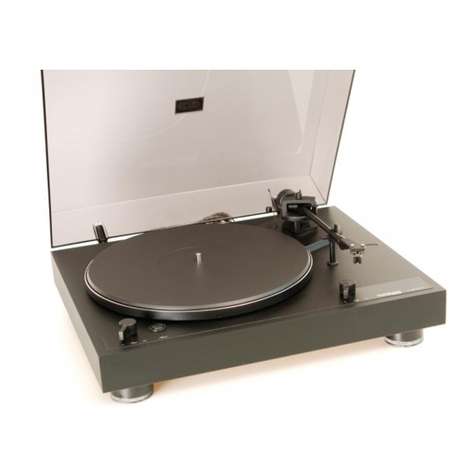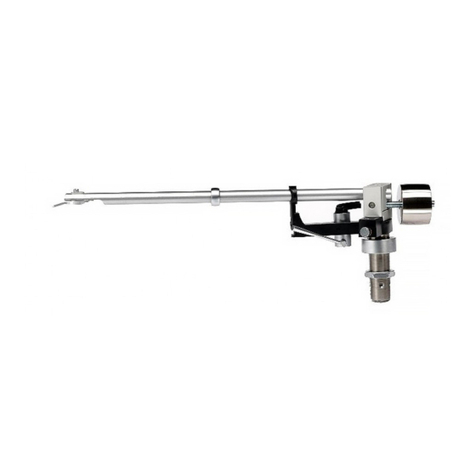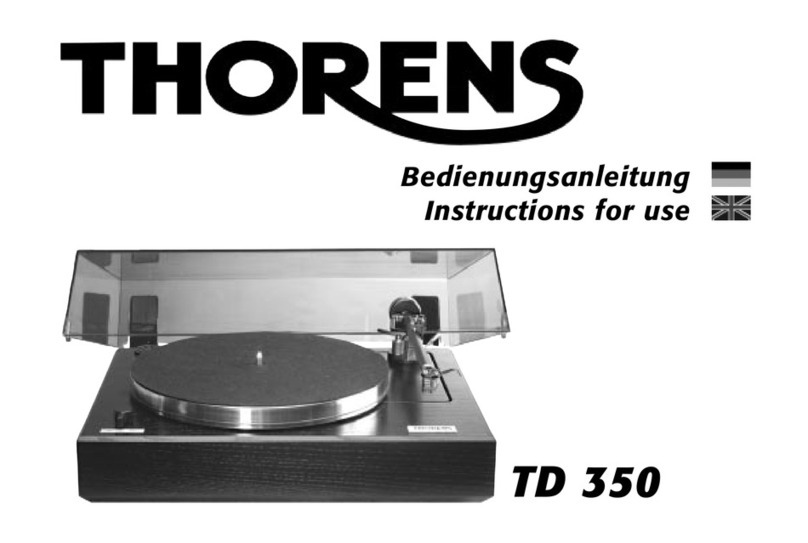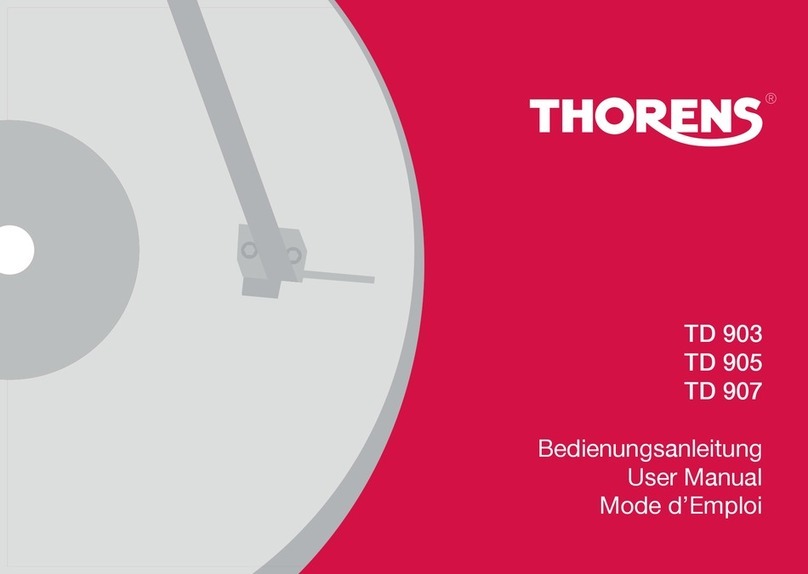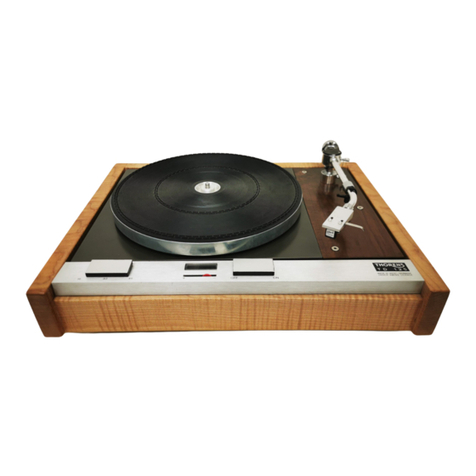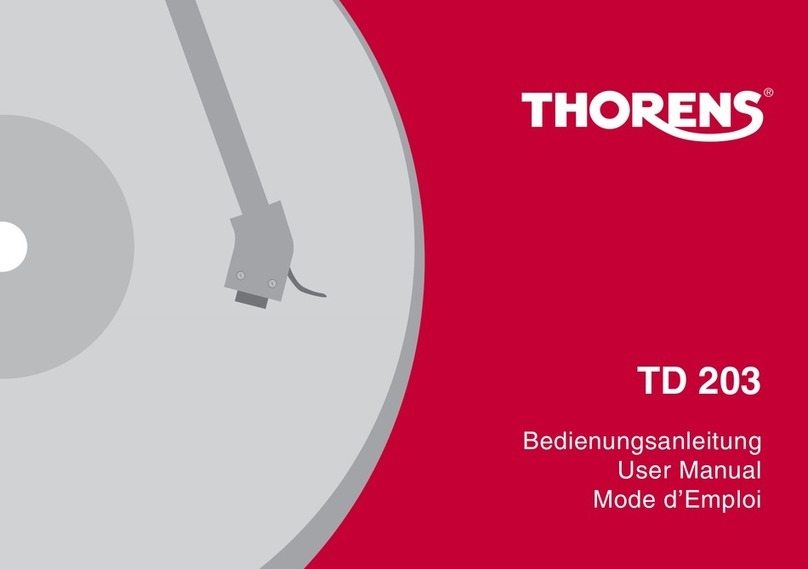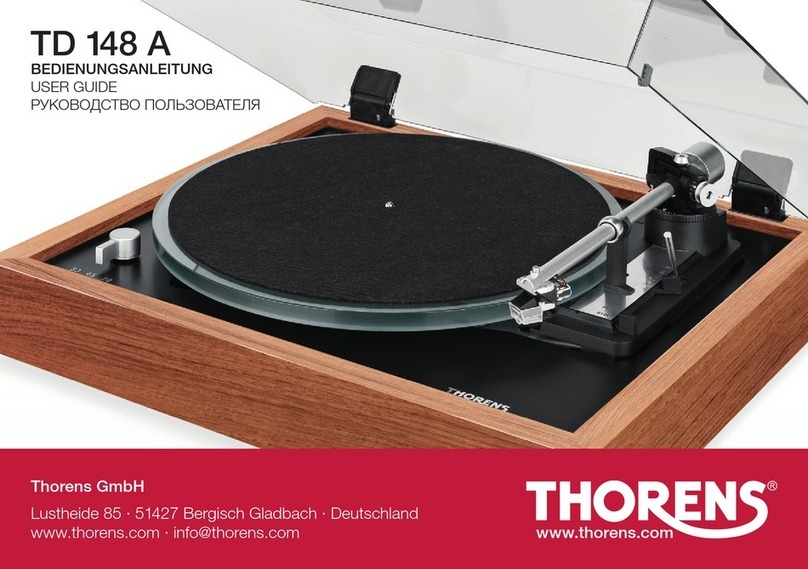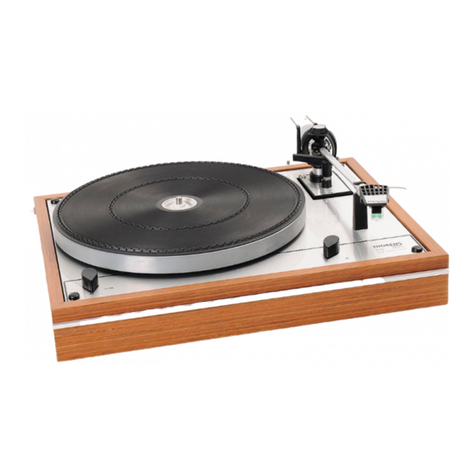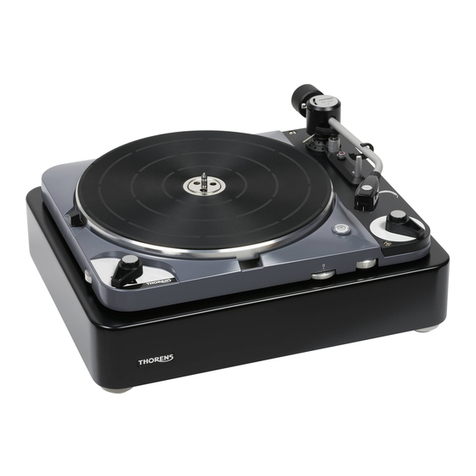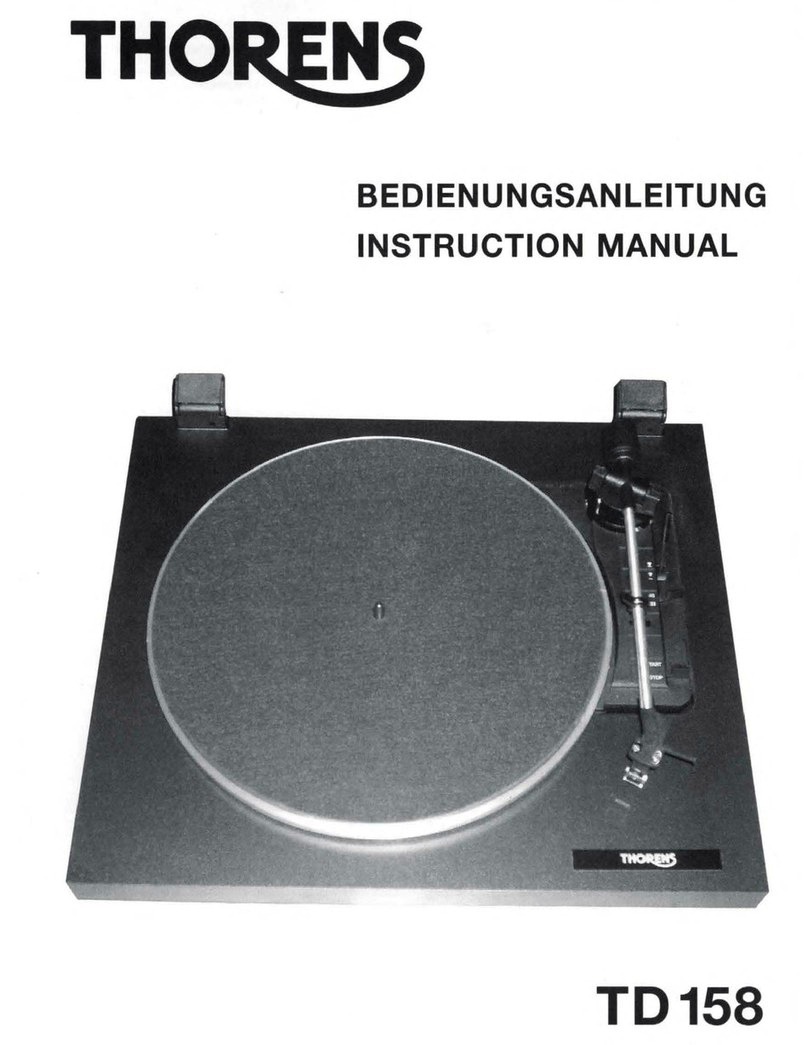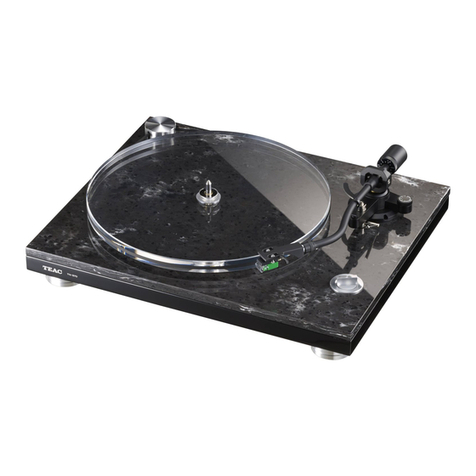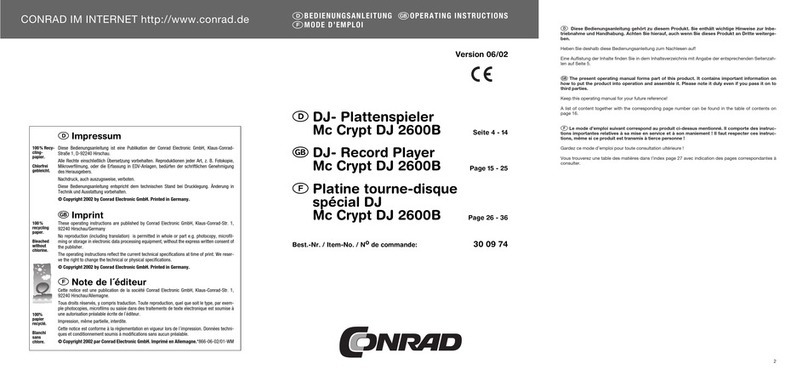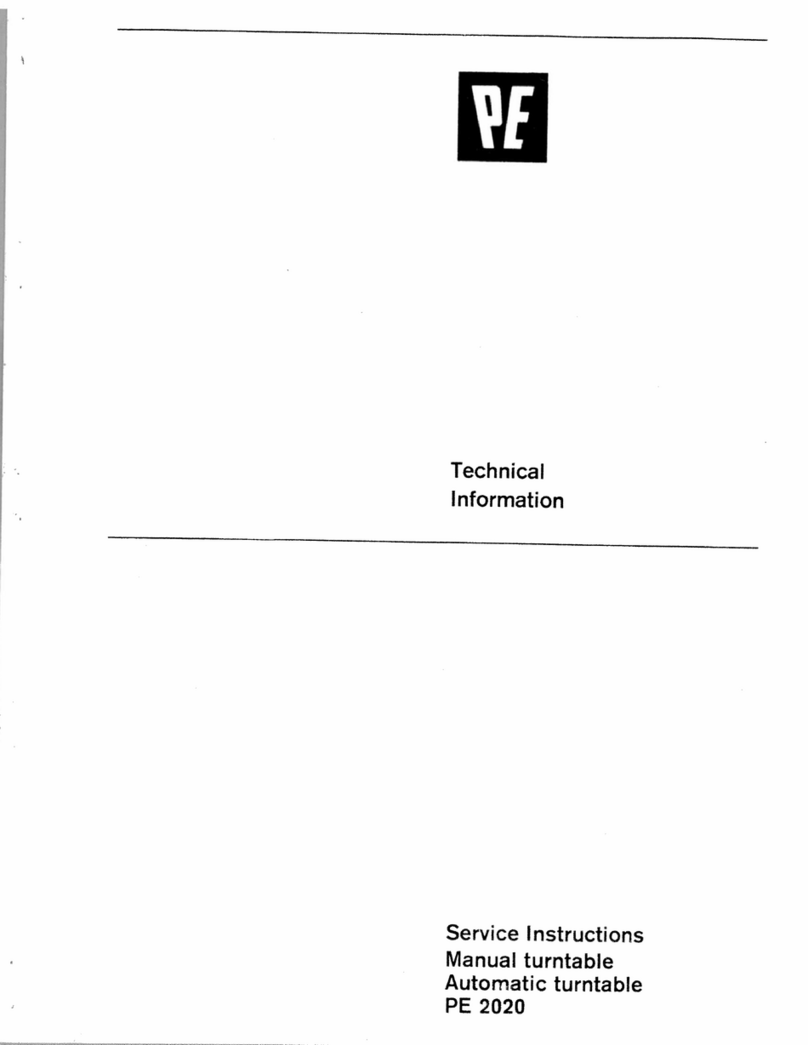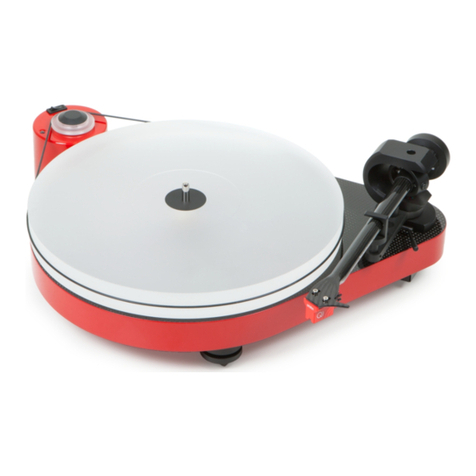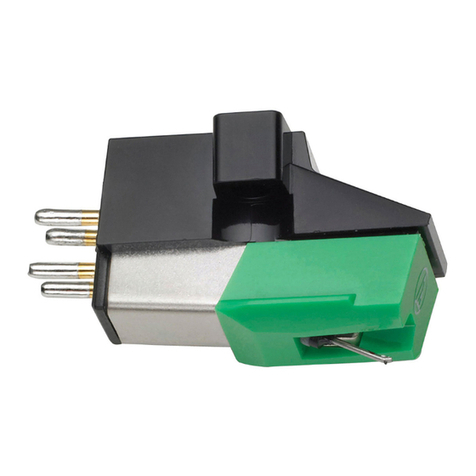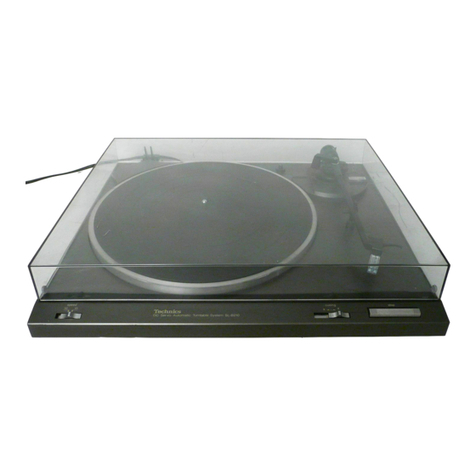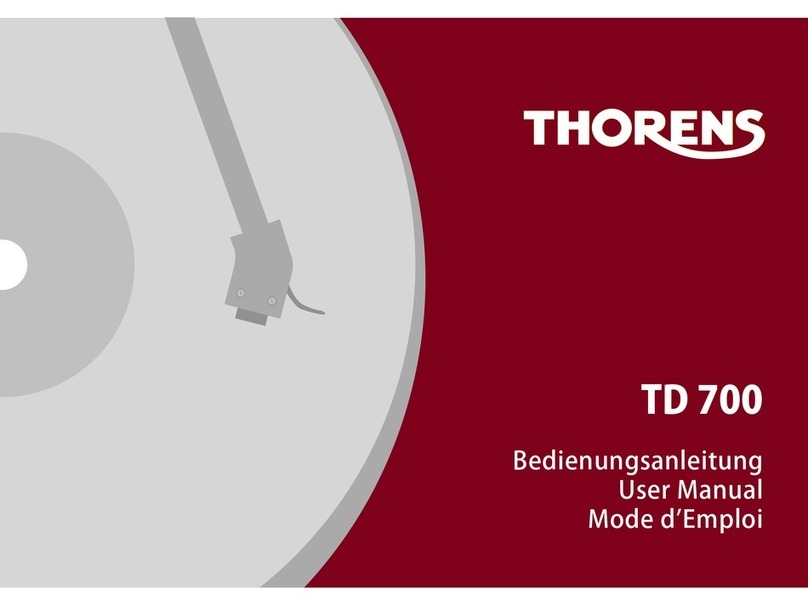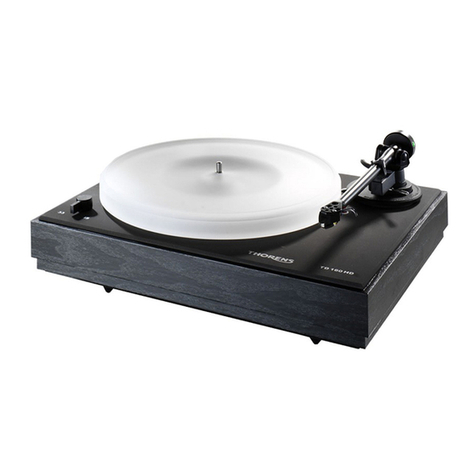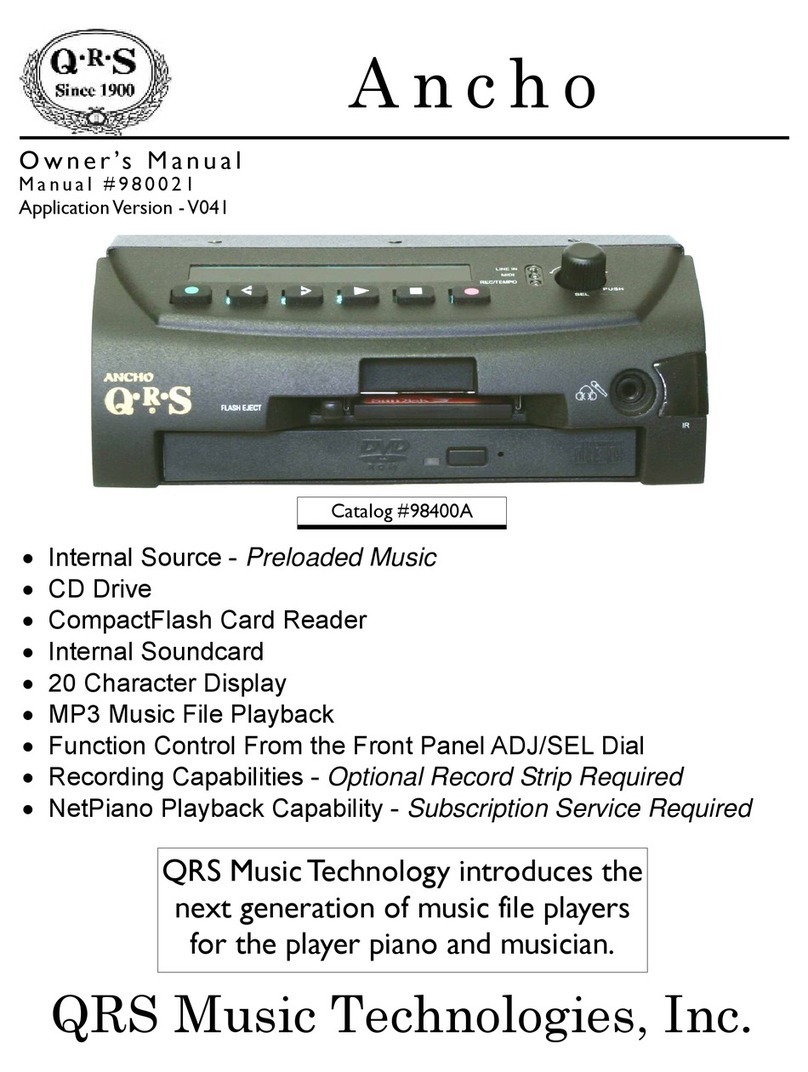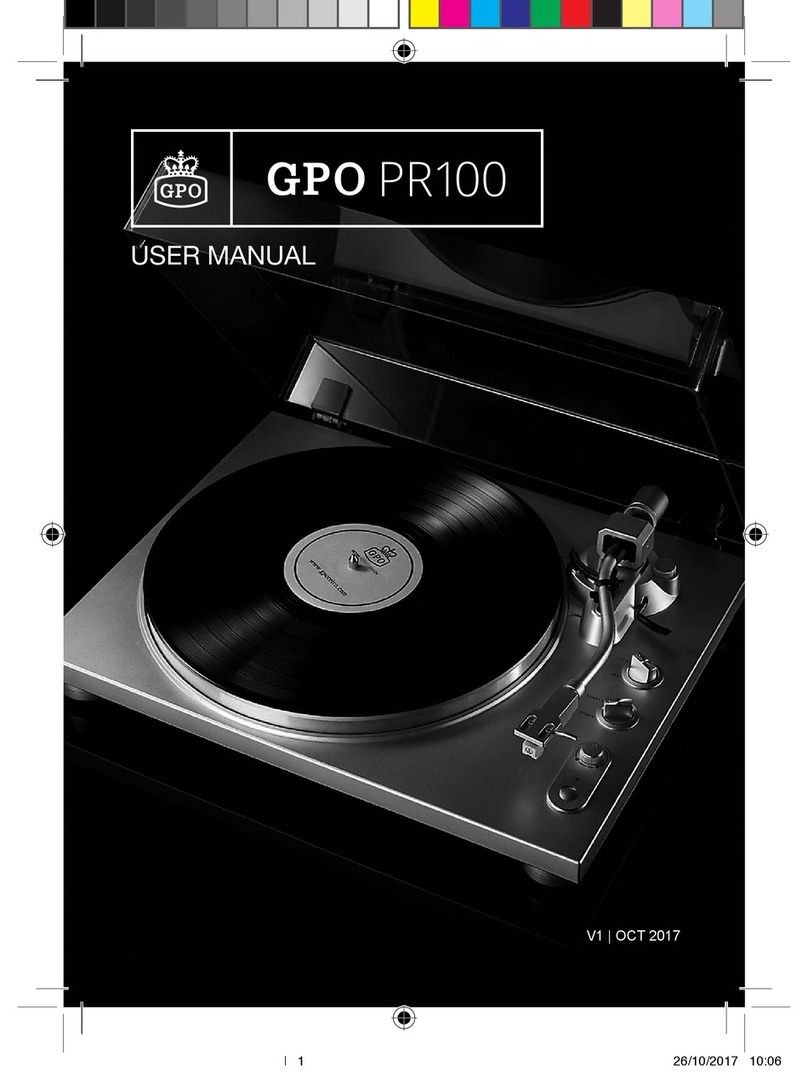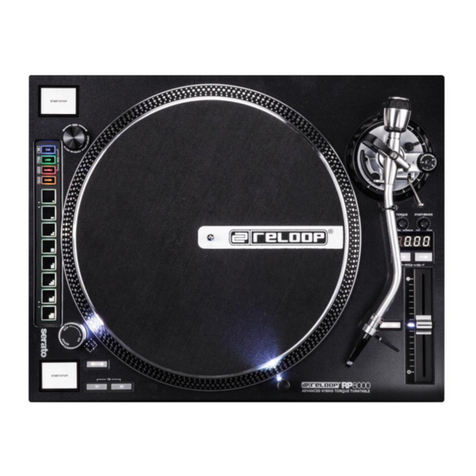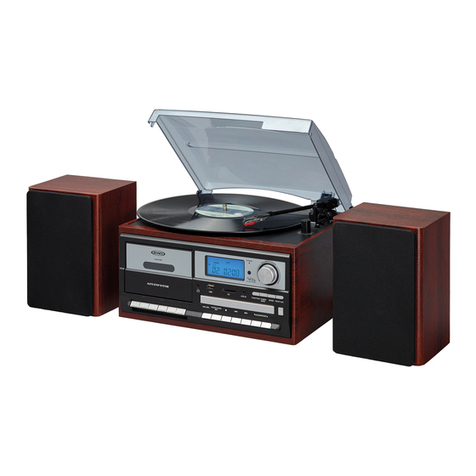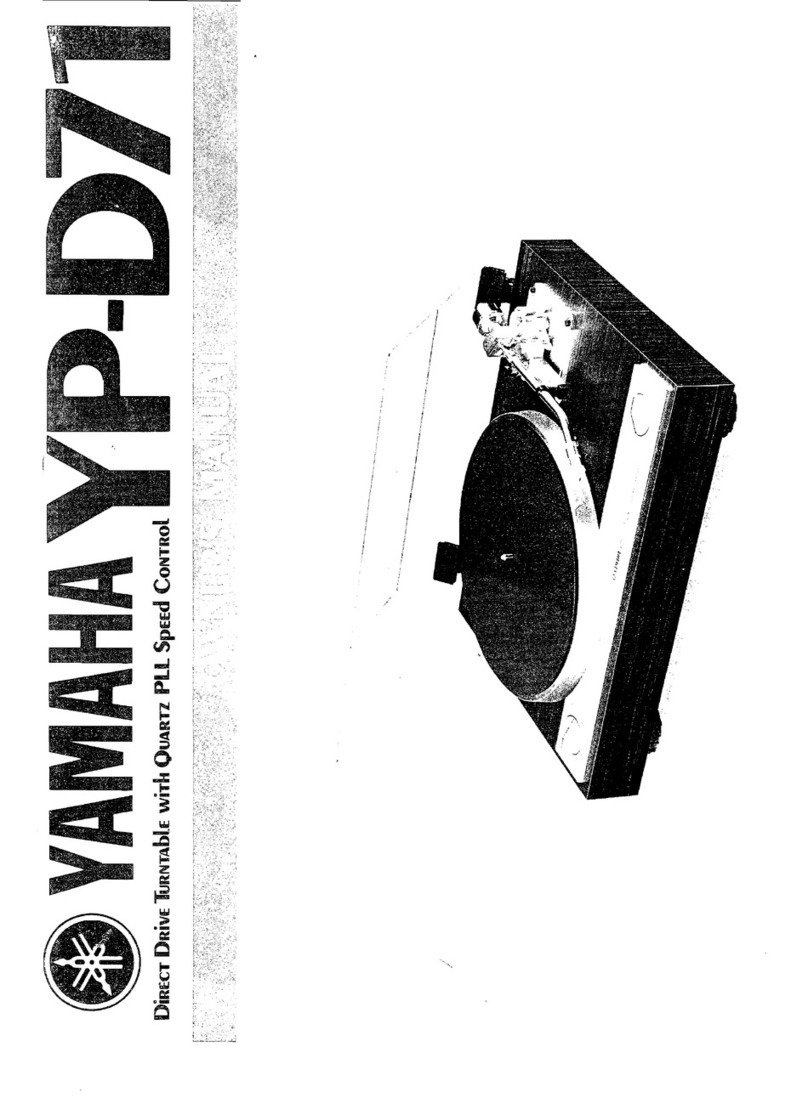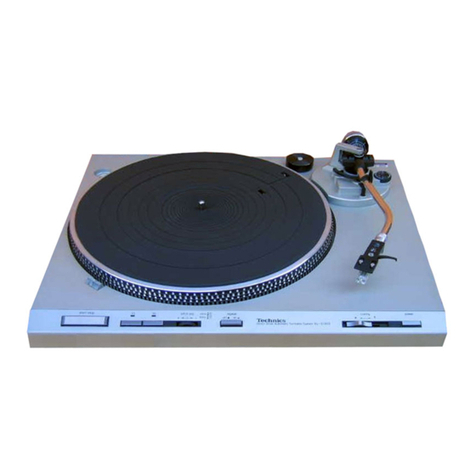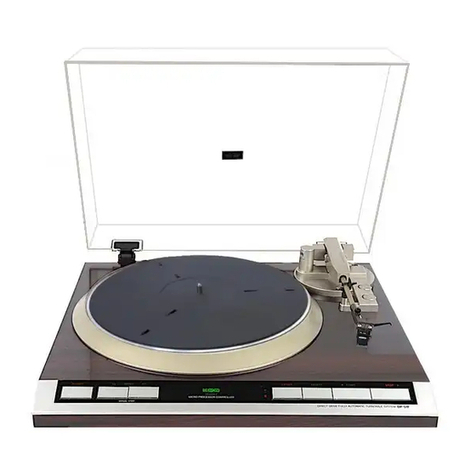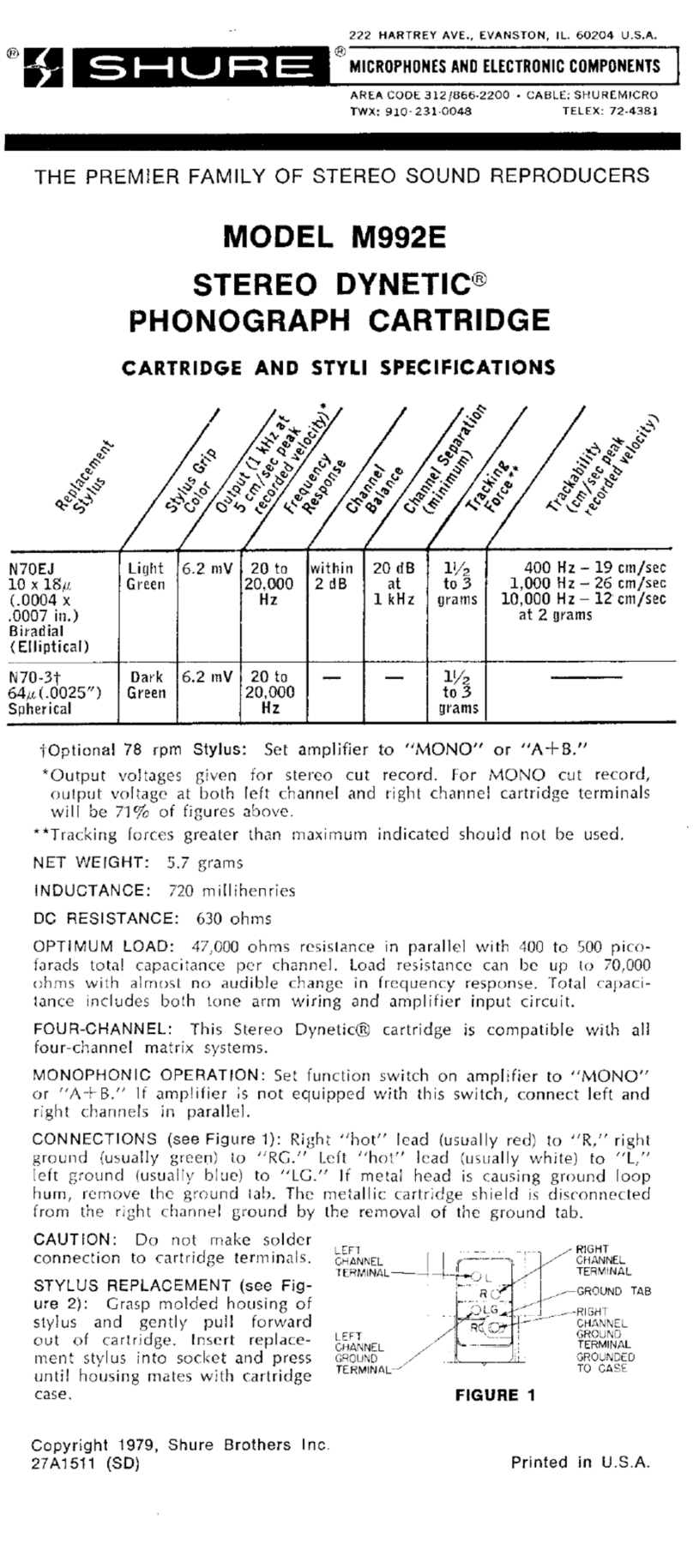Bif
d/Figure 14
IV. TrackingForceAdjustment
10mN
(milliNewton)
= 1
p
(pond)=1
g
(gramweight)
Beforethe trackingforce can be set, the tone arm
with
thecartridge
mustbebalanced
as
follows.
Movethe knurledtracking
force dial to the zero end
of the scale.Turn on the turntable
(see Section
VIII). Turnthe liftknobto the play position
-V-thus
loweringthe tone arm lift platform.
Position
the arm
between
the arm rest and the turntable
platter.
For
balancing,
loosenthe
knurledscrewon
thecounterweight.
While maintainingthe lateral position
of the arm
with the left hand to avoid damagingthe stylus,
slide the counterweight
until the stylus hoversat
record
playing
level.
Tightenthe knurledscrew and
recheckthebalance.
Note: The counterweight
of the TP 16 Mk III is
designed
for use with lightweight
pickupcartridges
(up
toabout8.5
grams).
Heaviercartridgesrequire a heavier counterweight,
available
through
your
dealer
fromTHORENS.
The adjustment
dial may now be set to the desired
tracking
force,in grams.
As indicated
in Figure
14,
the selectedforce is that value corresponding
with
theindentation;
intermediate
valuesare
indicatedbythe
white
points
betweenthe
numbers.
The tracking force may be initiallychosen accord-
ingtotherecommendationsofthecartridge
manufacturer.
Thissetting
willoftenbe correct;
however,
it shouldbe
noted
thatsuch
prescribed
tracking
forcesarefrequently
basedon ideal
playing
conditions,
i.e.,
using
records
containingonly
moderate
signal
modulationsandexhibit-
ingno
surface
warps.
In practice,
the conditions
for accurately
tracking
a
record
groove
areoften
moredemanding.
The
presence
of
audible
distortion
in both
reproductionchannels
during
loud passages
may indicatethe presence
of tracking
distortion,
whichcan be eliminated
by increasing
the
tracking
forceby0.25
or 0.5grams.
This
measurewill
actuallyextend
thelife
expectancy
oftherecord
played,
since
tracking
distortion
is invariablyaccompanied
by
groove
deformation
and
hence
premature
wear.
Distortion
in onlyone channel
maybe caused
by an
incorrectly
adjustedantiskating
force,
treated
in Section
It is necessarythat the stylus tip be kept free of I
residuesto
insureoptimumtracking
performance;
useonly I
astylus
brush
madefor
cleaning
purposes. I
v. Antiskatingadjustment
The angularhead geometry
of the TP 63 cartridge
wandresults
inminimalradialtracking
errors;
however
it
also
produces
asocalledskating
force,
which
presses
the
stylusonto
the
inner
side
ofthe
record
groove
and,
unless
remedied,
may
cause
distortion
in
one
stereochannel.
This
forceisproduced
bythetracking
frictionofthestylus
tip
with the mooving
groove;
a pull is exerted
on the
tone arm bearingsthat can be resolved into two
force components,
one longitudinaland the other
directed
inward,
perpendicular
to the tone arm, as
shown
inFigure
15.Thisinward
perpendicular
action
isthe
skating
forceFs;witha
lightly
balanced
tonearm,
it
can
lift
thestylus
outofthe
groove
andsend
itskating
acrossthe
recordsurface
towardthe centerof the turntable.
To
counteract
thistendency,
africtionless
magneticassem-
bly
inthe
THORENS
TP 16 MkIII tonearm
appliesan
antiskating
force, directedoutward as illustrated
in
the figure.
Since
the skating
forceis proportional
to
tracking
friction,theantiskating
force
must
beselected
in
proportion
tothe
factorscontributingtothis
friction.
The adjustmentscale on the TP 16 Mk III has
beencalibrated
to include
consideration
of the stylus
tracking
forceandtipconfiguration
forawetordry
record
surface.
The symbolson the calibrationscale representthe
followingtracking
conditions:
wet record surface (producedby
simultaneous
liquid
groove
clean-
ing, preferred by some users,
especially
inEurope
I
I
o spherical
stylus
1
o ellipticalstylus
J
o spherica.l
stvlusl I dryrecordsurface
(normar)
o ellipticalstylus
I I




















